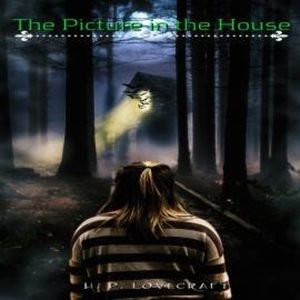The Picture in the House by H. P. Lovecraft - is a short story written by H. P. Lovecraft. It was written on December 12, 1920, and first published in the July issue of The National Amateur - which was published in the summer of 1921. It was reprinted in Weird Tales in 1923 and again in 1937.
Plot
While riding his bicycle in the Miskatonic Valley of rural New England, a genealogist seeks shelter from an approaching storm. He enters an apparently abandoned house, only to find it occupied by a "loathsome old, white-bearded, and ragged man", speaking in "an extreme form of Yankee dialect... thought long extinct." The narrator notices that the house is full of antique books, exotic artifacts, and furniture predating the American Revolution. At first, the old man appears harmless and ignorant towards his guest.
However, he shows a disquieting fascination for an engraving in a rare old book, Regnum Congo, and admits to the narrator how it made him hunger for "victuals I couldn't raise nor buy" - presumably human flesh. It is suggested that the old man was murdering travelers who stumbled upon the house to satisfy his "craving", and has extended his own life preternaturally through cannibalism. A now-frightened narrator realizes the old man has been alive for over a century. Still, the old man denies he ever acted upon such a desire. Suddenly, a drop of blood falls from the ceiling, clearly coming from the floor above, and splashes a page in the book. The narrator then looks up to see a spreading red stain on the ceiling; this belies the old man's statement. At that moment, a bolt of lightning destroys the house. Fortunately, the narrator survives to tell of his ordeal.
Inspiration
The ending of the story, in which the narrator is saved by a thunderbolt that destroys the ancient house, may have been inspired by the similar ending of Edgar Allan Poe's "The Fall of the House of Usher".
Critic Jason Eckhardt suggested that the dialect the unnaturally aged man uses in the story is derived from one used in James Russell Lowell's Biglow Papers (1848). Even in Lowell's time, the dialect was thought to be long extinct.[6] Scott Connors has stated that "the use of an archaic dialect in "The Picture in the House"...represents an early example of (the notion of plunging through time), transforming what might otherwise be a mundane tale of cannibalism into a meditation on the paradoxes of time."
Peter Cannon has pointed to parallels between "The Picture in the House" and Arthur Conan Doyle's "The Adventure of the Copper Beeches".
